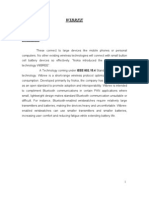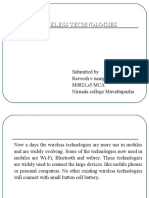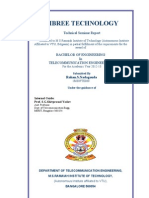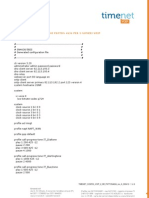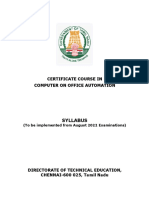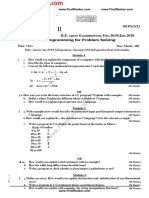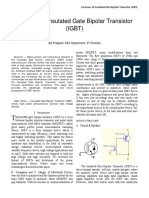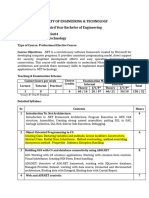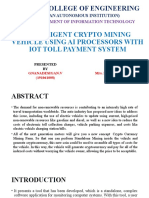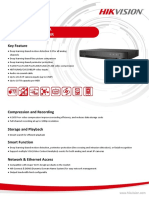0% found this document useful (0 votes)
286 views20 pagesWibree Is A Digital Radio Technology (Intended To Become An Open Standard of Wireless
Wibree is a low-power wireless technology developed by Nokia as an open standard for short-range communication between small, battery-powered devices. It was designed to operate using very small amounts of power from button cell batteries over a short 10m range. Wibree consumes much less power than Bluetooth, enabling smaller, cheaper devices like watches, keyboards and sensors. It has since been incorporated into the Bluetooth standard as Bluetooth Low Energy.
Uploaded by
Tejahareesh NakirikantiCopyright
© Attribution Non-Commercial (BY-NC)
We take content rights seriously. If you suspect this is your content, claim it here.
Available Formats
Download as DOC, PDF, TXT or read online on Scribd
0% found this document useful (0 votes)
286 views20 pagesWibree Is A Digital Radio Technology (Intended To Become An Open Standard of Wireless
Wibree is a low-power wireless technology developed by Nokia as an open standard for short-range communication between small, battery-powered devices. It was designed to operate using very small amounts of power from button cell batteries over a short 10m range. Wibree consumes much less power than Bluetooth, enabling smaller, cheaper devices like watches, keyboards and sensors. It has since been incorporated into the Bluetooth standard as Bluetooth Low Energy.
Uploaded by
Tejahareesh NakirikantiCopyright
© Attribution Non-Commercial (BY-NC)
We take content rights seriously. If you suspect this is your content, claim it here.
Available Formats
Download as DOC, PDF, TXT or read online on Scribd
/ 20
